How Many Types Of Chimpanzees Are There?
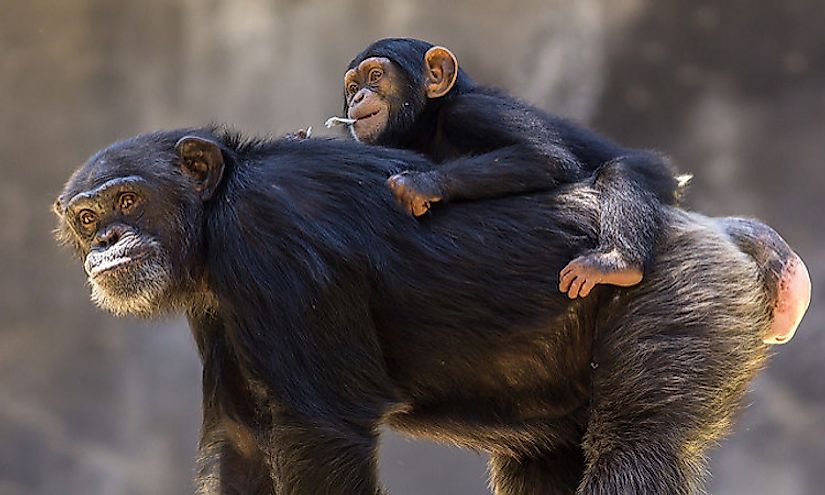
Chimpanzees are one of the two species that belong to the genus Pan: the common chimpanzees and the bonobos. These animals are species of the great apes that are found exclusively in Africa. The common chimpanzees are divided into four subspecies: the eastern, western, central, and Nigeria-Cameroon chimpanzees.
8. Eastern chimpanzee -
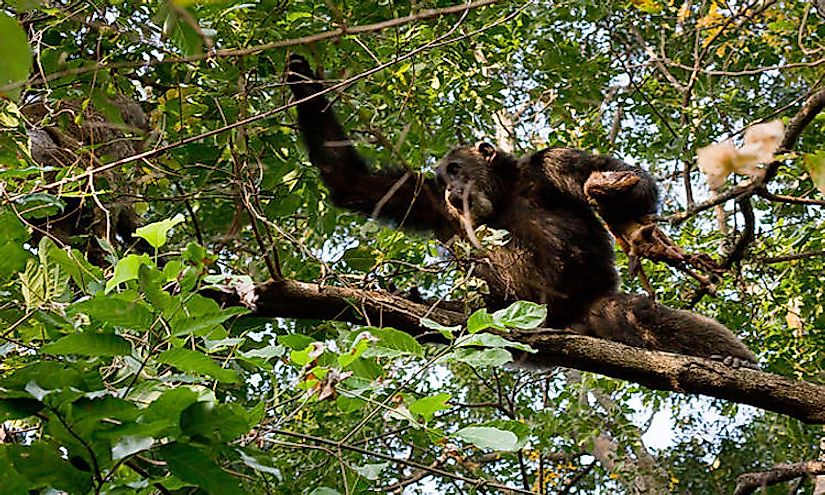
The eastern chimpanzee (Pan troglodytes schweinfurthii) is another one of the subspecies of the common chimpanzee that is found in many countries of Africa including Burundi, Rwanda, Tanzania, Uganda, Sudan, DRC, and CAR. The eastern chimpanzee has been extensively studied by Dr. Jane Goodall at the Gombe National Park. The chimpanzees are classified as Endangered by the IUCN. Contagious human diseases have affected populations of the chimpanzees in the past. The animals are both terrestrial and arboreal by nature and can walk upright for short distances. The chimpanzees are omnivores that predate on both plants and animals. Leopards and lions predate on these animals.
7. Nigeria-Cameroon chimpanzee -
The Nigeria-Cameroon chimpanzee (Pan troglodytes ellioti) inhabits the rainforests of Africa that cover parts of the border of Nigeria and Cameroon. Male members of these chimpanzees grow up to as much as 70 kilos and attain a body length of nearly 1.2 meters and a height of 1.6 meters. The subspecies is the most threatened among the other subspecies of the common chimpanzees mainly because of its narrow range of distribution. The adverse human behavior towards these animals needs to be altered if these animals are to survive in the future.
6. Western chimpanzee -
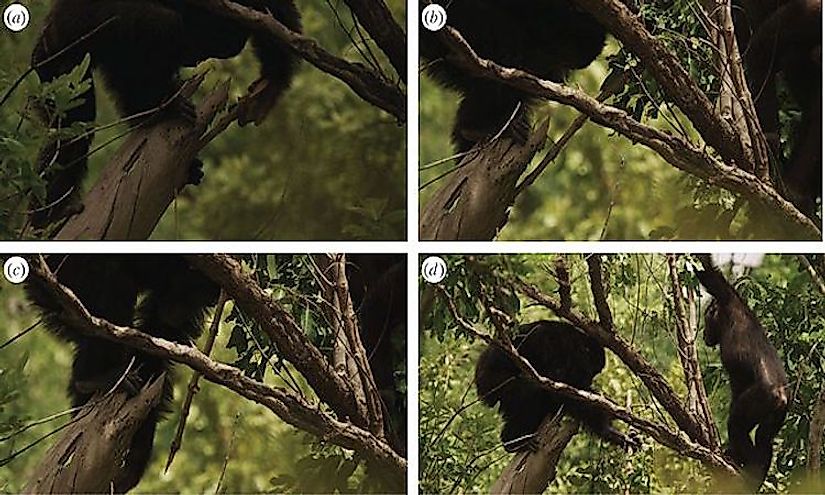
The western chimpanzee (Pan troglodytes verus), as the name suggests, lives in western Africa. The biggest populations are concentrated in the countries of Guinea and Côte d'Ivoire. The chimpanzees are efficient hunters and will hunt primarily monkeys and occasionally mongooses and bushbucks for food. The Western chimpanzees exhibit a number of unique behavior not displayed by other chimpanzee species. These animals use wooden spears for hunting, live in cave homes, share foods, enjoy playing in the water, and forage at night. The chimpanzees are classified as endangered since they have suffered a rapid decline due to habitat loss and killing for bushmeat. Today, there are only about 21,300 to 55,600 wild Western chimpanzees living in Africa.
5. Central chimpanzee -
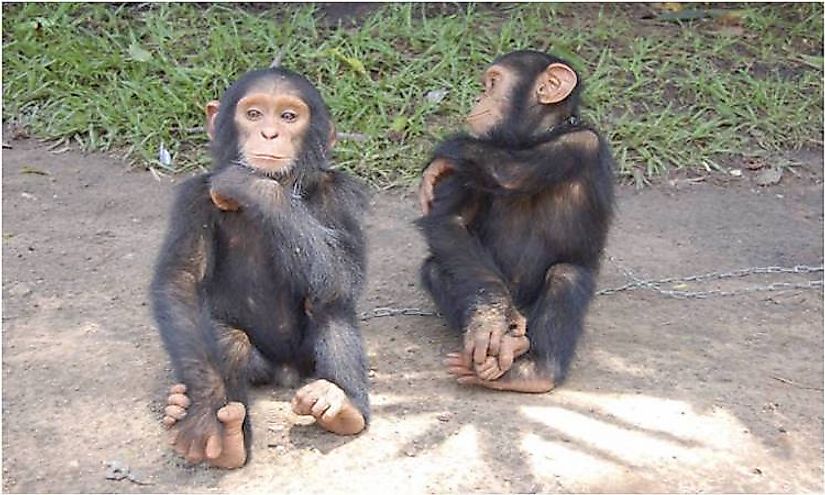
A subspecies of the common chimpanzee, the central chimpanzee (Pan troglodytes troglodytes) lives in Africa where it is found in the Republic of the Congo, Cameroon, and Gabon. Small populations also exist in Equatorial Guinea, the Central African Republic, the Democratic Republic of the Congo, and a few other countries. The central chimpanzees are primarily found in the savanna woodlands, the tropical moist forests, and also the forest-savanna mosaics. They animals are found at altitudes ranging between sea level and about 9,800 feet. The IUCN classifies these chimpanzees as endangered. Only about 47,000 to 78,000 individuals of this species survive today. Habitat destruction has affected the chimpanzees and wiped out large sections of the population. Other factors like poaching for bushmeat, habitat destruction, and Ebola virus epidemic has also adversely affected populations of this species.
4. Common chimpanzee -
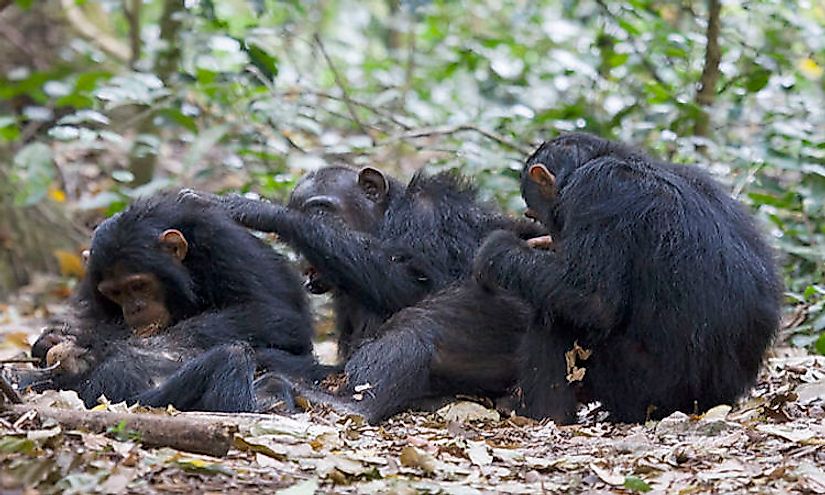
Though all the subspecies of the common chimpanzee have been mentioned above, it is important to mention the characteristic features of this species to distinguish it from the bonobos and the other great apes. Colloquially, the terms common chimpanzees or chimpanzee or chimp is used to refer to both the species of genus Pan, that is, common chimpanzees and bonobos.
However, according to scientific and genetic studies and nomenclature system, common chimpanzees or robust chimpanzee refers to members of the species Pan troglodytes. The common chimpanzee has a bare face, toes, palms, soles, and fingers. However, the rest of its body is covered by coarse black hair. These animals weigh between 40 and 65 kg and attain a body length of about 63 to 94 cm. In captivity, these chimpanzees can survive up to 50 years. The chimps live in large groups of 15 to 150 individuals and live in a male dominated society. There are about 170,000 to 300,000 individuals of this species living across the wide range in sub-Saharan Africa.
3. Bonobo: The Difference From Chimps -
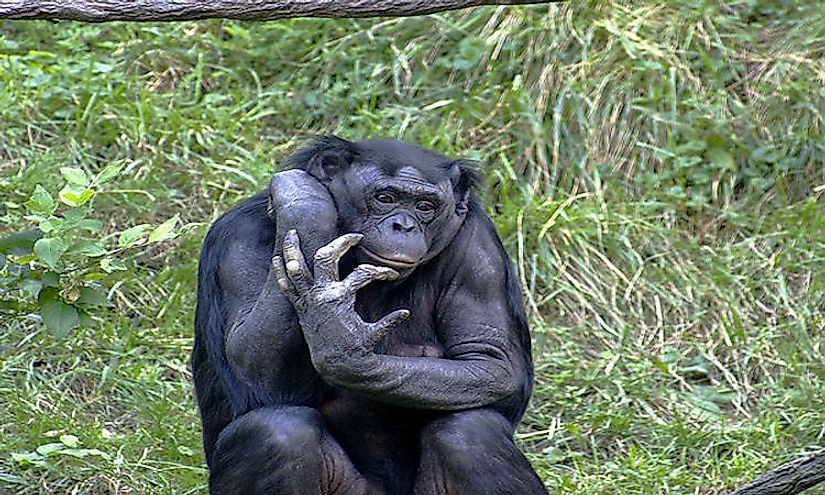
The bonobo (Pan paniscus) is an endangered great ape that is closely related to its sister species, the common chimpanzee. These animals are found in a limited range that covers the area of the Congo Basin in DRC, Central Africa. Since neither the bonobo nor the common chimpanzee is an efficient swimmer, it is possible that the formation of the Congo River about 1.5 to 2 million years back led to the evolution of the bonobo as a separate species. Though anatomical differences between the two species are less significant, the social and sexual behaviors are quite distinct between the two species. The common chimpanzee has an omnivorous diet while the bonobos are usually frugivorous. A troop hunting culture and highly complex social relationships are exhibited by the former while the latter are mostly nonviolent and egalitarian by nature. Common chimpanzees have a patriarchal society while bonobos have a matriarchal society. The former are also generally more aggressive than the latter.
2. Exploitation Of Chimpanzees By Humans -
Like most other animals inhabiting the Earth, the chimpanzees have not been spared from the greed of humans. These highly intelligent animals have been hunted for centuries for their meat. Young chimpanzees have also been captured by killing their mothers and sold in the illegal trade markets. Chimps have also been used extensively in medical research and have been subjected to various tests and experiments some of which have been criticized by animal welfare organizations for bearing elements of extreme cruelty to these creatures. Humans have depleted these animals of their home by destroying large tracts of forests. Unplanned research activities have disrupted the social structure of these animals.
1. The Need To Save The Animals -
It is quite evident that given the above reasons, the chimpanzees of Africa are in danger. The endangered status of both common chimpanzees and bonobos on the IUCN Red List is direct proof of this fact. Chimps thus need protection from human activities that threaten their survival. Action has been taken by several governments of African countries. However, the threats still continue to exist, and stricter action is needed in the future to make the conservation story of chimpanzees a success story.











